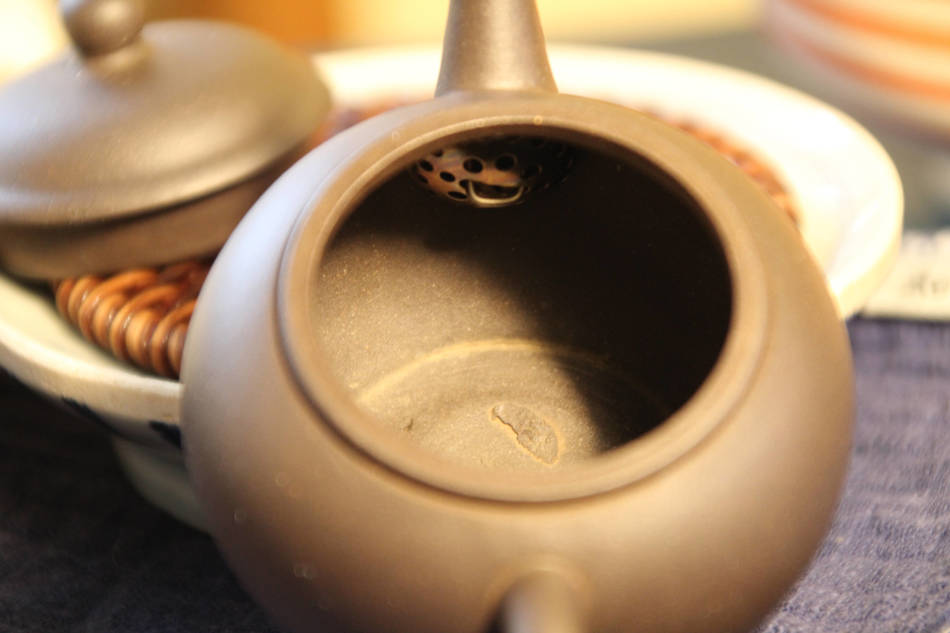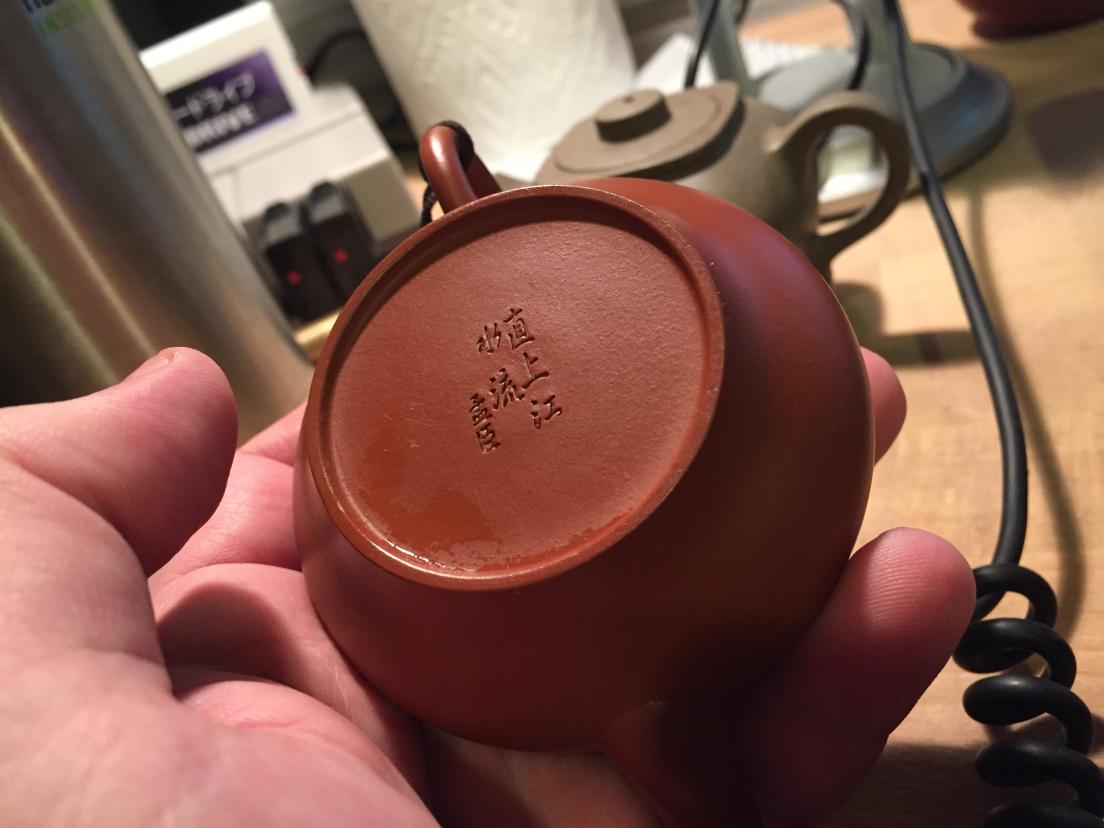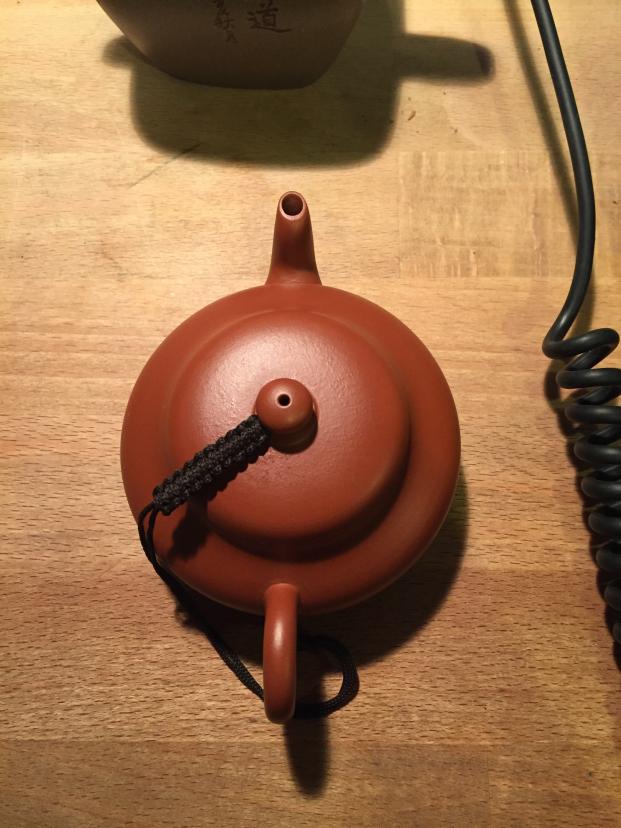I think you are right, i had a native speaker traducing it as meng cheng, but she is no expert in the materia. Also probably she was influenced by me asking.steanze wrote: ↑Fri Jan 15, 2021 12:03 pmOne reason you are having difficulty getting an answer is that seal script is hard. The way characters are written on seals is not the usual writing. To make things worse, there are multiple possible ways to write the same character in seal script. So even native speakers who can read Chinese often have difficulty deciphering the characters on seals.
My impression is that this seal does not say mengchen, but you will want the opinion of someone with specific expertise on seal script. I don't know if there is someone with that type of expertise on the forum.
Yixing
Help from the community... ! I bought this pot a few years ago from Chawang. It is supposed to be a late 90s F2/5 "dark zini". So it is not sold as heini, but the clay is still mush darker than 70s and 80s zini, at least in my experience. I've read that the factories around this time used to add manganese oxide and other compounds to darken the clay. Is there anyway to know if this clay has been altered, other than to test it? Also, could it be harmful?
- Attachments
-
- IMG_2695.JPG (74.89 KiB) Viewed 8810 times
-
- IMG_2697.JPG (72.06 KiB) Viewed 8810 times
-
- IMG_2716.JPG (72.76 KiB) Viewed 8810 times
It’s pretty safe to assume anything from that period had additives.friso wrote: ↑Sun Jan 17, 2021 6:26 pmHelp from the community... ! I bought this pot a few years ago from Chawang. It is supposed to be a late 90s F2/5 "dark zini". So it is not sold as heini, but the clay is still mush darker than 70s and 80s zini, at least in my experience. I've read that the factories around this time used to add manganese oxide and other compounds to darken the clay. Is there anyway to know if this clay has been altered, other than to test it? Also, could it be harmful?

Only way to know what’s in it is to get it tested.
+1, post green label it's almost certain that barium was added, and possibly manganese oxide too. That does not necessarily mean that it is harmful to use it.
Last edited by pedant on Sun Jan 17, 2021 8:01 pm, edited 1 time in total.
Reason: mod edit: fixed quote
Reason: mod edit: fixed quote
++1 to both responses from @Bok and @steanze.
I’ve came across F2/F5 pots that churns out very good teapots. Once in a while you will find a gem!
Cheers!
All right, thanks people!
I guess then that the only thing that differentiates 90s zini from 90s "heini" is the amount of manganese oxide and other additives that was mixed with the clay ; meaning there are additives anyway. Puts things into perspective... maybe heinis are not so bad after all. And as @OCTO suggests, 90s yixing pots feel like some sort of lottery at this point!
I guess then that the only thing that differentiates 90s zini from 90s "heini" is the amount of manganese oxide and other additives that was mixed with the clay ; meaning there are additives anyway. Puts things into perspective... maybe heinis are not so bad after all. And as @OCTO suggests, 90s yixing pots feel like some sort of lottery at this point!
There isn't really Heini to begin with. The black color is usually achieved by reduction firing a high iron zisha ore, usually some kind of Zini. In the worse case, it's achieved by reduction firing a low iron whatever clay, mixed with manganese oxide to make it actually more black colored.friso wrote: ↑Mon Jan 18, 2021 2:17 pmAll right, thanks people!
I guess then that the only thing that differentiates 90s zini from 90s "heini" is the amount of manganese oxide and other additives that was mixed with the clay ; meaning there are additives anyway. Puts things into perspective... maybe heinis are not so bad after all. And as OCTO suggests, 90s yixing pots feel like some sort of lottery at this point!
Thanks alot! I was able to find some info, albeit in chinese : http://www.12129.com/1news/show.asp?id=1514
Artis is from late qing era, mine is probably a repro.
Still a pretty well made bamboo motif, and very muting duanni.
- BriarOcelot
- Posts: 43
- Joined: Sat Dec 12, 2020 1:42 pm
- Location: Montreal
I'm fairly sure this is a modern replica pot - but I'm curious to what the stamped text says on the bottom - anybody willing to translate? It has zero stamps anywhere else.


It makes great tea though.


It makes great tea though.
It reads 直上江水流 , 孟臣。[ Zhíshàng jiāngshuǐ liú mèng chén ]. It relates to water flowing from the top of the stream. Here’s a literal translation from Google Translate - “Straight up the river stream , Meng Chen.”BriarOcelot wrote: ↑Mon Jan 18, 2021 9:13 pmI'm fairly sure this is a modern replica pot - but I'm curious to what the stamped text says on the bottom - anybody willing to translate? It has zero stamps anywhere else.
It makes great tea though.
Hope that helps! Cheers!!
- BriarOcelot
- Posts: 43
- Joined: Sat Dec 12, 2020 1:42 pm
- Location: Montreal
